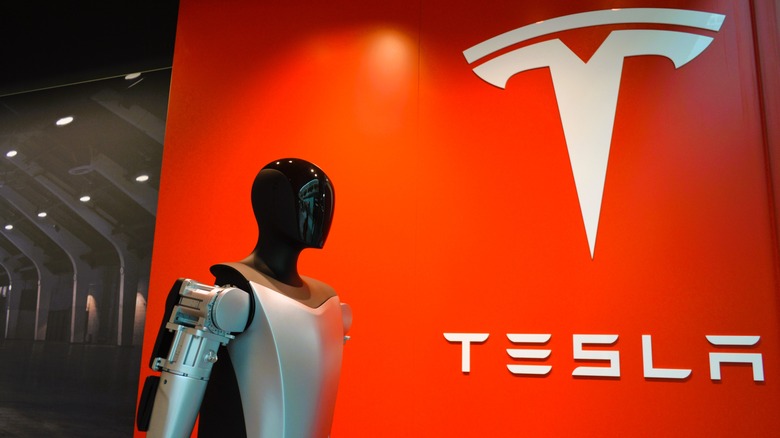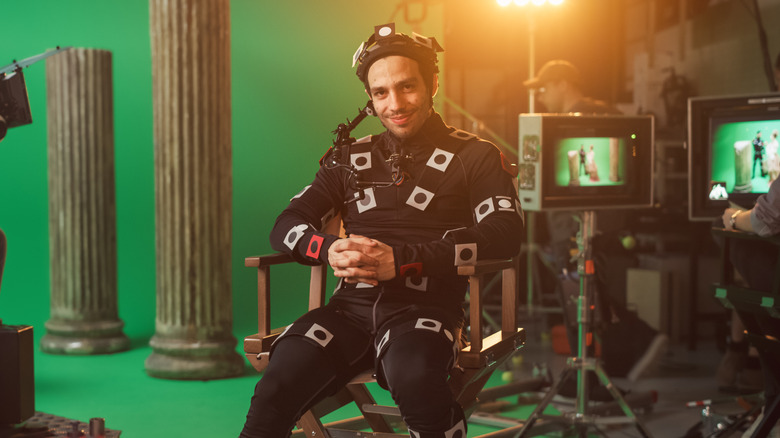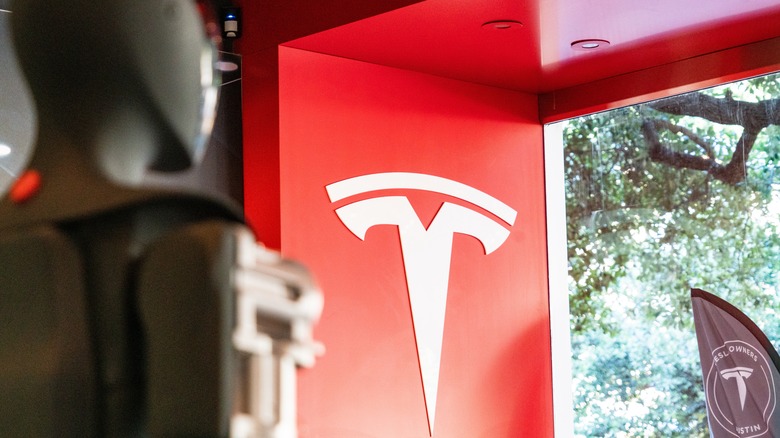The Hollywood Tech That's Training Tesla's AI-Powered Robots
Tesla has been hard at work developing its own humanoid robot since 2021, branching out beyond electric vehicles. Elon Musk's latest obsession is called Optimus, and its development requires some training from anyone willing to be on their feet walking while carrying 30 lbs. of equipment for more than 7 hours a day. All of the prerequisites for the role are physical; you have to be between 5'7" and 5'11" — with zero education requirements, making it a nice $25.50 to $48 per hour gig. According to Business Insider, roughly 50 people have filled the position over the past year. You might be wondering what the 30 lbs. of equipment is.
If you've ever paid attention to behind-the-scenes work for "The Lord of the Rings" or "Star Wars" or any large-scale blockbuster, you've seen some actors wear motion capture suits to portray unreal monstrosities on the big screen. That's exactly what a Data Collection Operator for the Tesla Bot has to wear, plus a VR headset. Tesla revealed an Optimus prototype in 2022 that actually worked in the sense that it could walk without any kind of support. However, the project has a long way to go before Optimus can fulfill Musk's dream, which is replacing human employees in the workplace. Using motion capture to train robots is nothing new. Tesla is simply one of the first companies to do it on such a wide scale.
What motion capture does for robotics
Robots, in general, are greatly limited by the programming they receive. They can't accurately replicate human movements without an accurate representation of such, which is arguably more difficult to code with a keyboard than it is for some sort of motion capture. Motion capture feeds the more nuanced motions of human movement into a camera, making the robot's movements become more fluid. More humanlike.
When manufacturers have supply lines with relatively simple tasks, such as painting the same object repeatedly or moving an object to an adjacent location, the programming is simple. Performing more complex tasks, on the other hand, requires exponentially more data. Robotics expert out of the University of Sheffield, Jonathan Aitken, told Business Insider, "In the manufacturing world, we typically have a robot that can do one task really well, but it doesn't usually extend beyond that."
Not only can Mo-Cap capture those small details in a person's movement, creating a precise robot, but it can also expedite the development of a prototype or final product. It wouldn't be surprising if Apple is already using motion capture for its own Apple Robot after the failure that was its Apple car on a smaller scale.
Humanoid robot applications
CNBC reports that Tesla believes it will have a few thousand Optimus robots working for it by 2025. While Elon Musk's goal for Optimus is to create a robotic workforce to increase productivity, there are other use cases for robots that wouldn't entirely strip away the human component from an organization. A fire department or military could develop humanoid robots that could reduce the risks the human employees face in the field, such as running into a burning building or clearing an enemy-held building overseas. Using robots in healthcare can help reduce the risk of an infection spreading and potentially improve surgical outcomes.
Replacing people in the workplace in any capacity isn't an ideal scenario without some sort of supplemental income. Otherwise, an entire nation can end up unemployed. That's the biggest fear workers worldwide have with these technological advancements. Yes, amazing feats are being accomplished in robotics, machine learning, and AI. Using robots in a collaborative capacity and not as replacements is the best use case for the time being.


